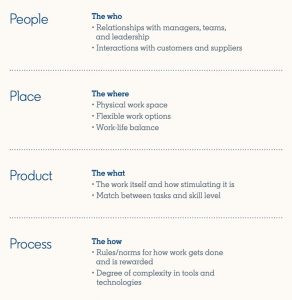Organizations that support consumers and enterprises alike are looking to enhance the self-service opportunities available to their customers. A 2014 research effort from The Service Council found that 6 out of 10 organizations were looking to provide increased self-service resources to their customers.
One might think self-service is all great when it comes to simple questions and simple fixes, but what about, for instance, the service tied to complex machinery? In these instances, do organizations really want their customers to be tinkering with equipment after reading a manual online? Not necessarily, but organizations do want to develop a better understanding of the breadth of self-service needs. This is done in order to expose service issues that can be solved directly by customers at their own convenience.
Providing the Right Information
Increased intelligence on service occurrences is being assembled with the aid of new technology. The Internet of Things is empowering service organizations to dig deeper into service incidents. As a result, organizations can appropriately diagnose a service situation, determine corrective or preventive action, and execute on service delivery. Depending on the action necessary, service execution can take place at the hands of the customer with no organization involvement, at the hands of the customer with some organization assistance, or at the hands of the organization with no customer involvement.
The traditional driver for self-service investments was cost elimination and the reduction of the burden on the service organization. Now, there is the realization that customers often resort to self-service channels as a first attempt, and therefore, it makes sense to provide information and resolution paths on channels and mediums preferred by the customers. In essence, this serves to improve customer satisfaction and also reduce the burden on the service organization.
Does this mean that we should just dump all of our service procedures, support manuals, and more online and let clients fend for themselves? After all, it is in support of greater self-service…. That would not be appropriate as it fails to account for the entire experience delivered to the customer. While the customer might eventually track the necessary information, the time and effort expended might negate the overall convenience of the self-service interaction.
Achieving Excellence in Self-Service
Excellence in self-service requires a focus on effectiveness and experience. Effectiveness is related to the actual resolution of a customer query. A customer needs to have the confidence that when they seek support, there will be a path to resolution. If there is no resolution, trust is broken and that particular path of service inquiry will never be attempted again.
Experience is tied to the way in which resolution is achieved. Factors such as customer effort, ease of information access, service journey flow, and more become extremely important here. Was the resolution achieved in such a manner that was easy for the customer and will lead to a repeat use of that particular mode of service delivery? While effectiveness is the basic requirement of the service transaction, experience drives commitment and loyalty.
To deliver an ideal experience, it is essential that organizations understand the customer journey and the context in which service is being sought. Simply taking a service procedure as conducted by a knowledgeable service agent and pushing it in the hands of the customer is ineffective and leads to frustration and self-service channel abandonment. Which then brings us back to a live service interaction, only this time with an unhappy customer.
I’ve laid out several ideas and best practices around self-service in a thought leadership paper (conveniently titled Getting More with Self-service) that can be accessed here. These ideas were assembled from numerous interviews with organizations that make up The Service Council community.
What’s more, I’ll be sharing some key findings and takeaways from the paper on an upcoming thought leadership and best practices webinar on February 24 featuring myself, Parature, from Microsoft’s Bill Patterson, and Peter Friedenberg of nTelos Wireless. Please join us and share your thoughts, questions and comments.
(224)




